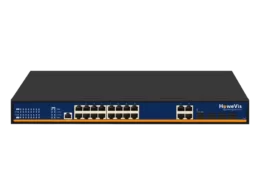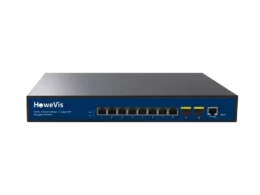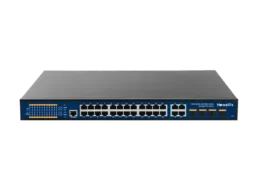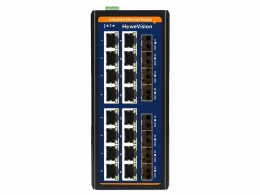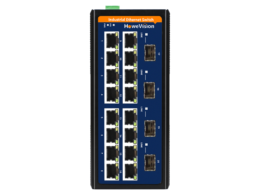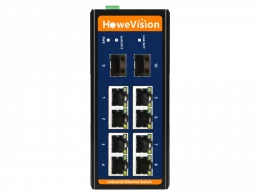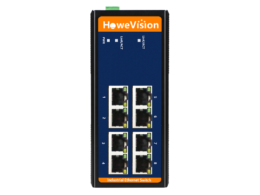The electrical system is now efficient and more powerful compared to the 20th century. The Internet of Things has converted the whole world into a small village. You know, how? Hundreds of miles away, you can click a button and call your friend. Not only audio calls but also video calls are no longer difficult to achieve. So many miles but, still, we are close to each other. How is it even possible? It seems to be an illusion to me that people adapted to advanced technology and positively used it for their purposes.
Though we can connect with our friends miles away, what if we have slow-speed internet? The audio call is possible, but a video call will be problematic. Engineers have even improved this system by introducing another technology called PoE. A solution for every problem. High-speed internet is out there.
If you want to know how PoE originated, have a look at— How PoE was born.
What is PoE Technology?
PoE— seems to be a buzzword with lots of meaning. Powerful and influential technology for you to implement in your systems. PoE refers to “Power Over Ethernet.” Maybe you have seen Ethernet cables. In PoE, power and data supply occurs through the use of Ethernet ports.
You might find different types of Ethernet ports— Cat3, 5, 5e, or 6. These work differently and supply different data speeds within the given range.
If you want a detailed guide over PoE, go through the article — What is PoE?
How Does Power Over Ethernet Work?
The Institute of Electrical and Electronics Engineering(IEEE) introduced the PoE technology in 2003. The first PoE standard was 802.3af which supplied power and data supply to low-powered devices. Power over Ethernet works on those IEEE principles. Here is a list of PoE principles.
- PoE Type 1 IEEE 802.3af
- PoE+ Types 2 IEEE 802.3at
- PoE++ Type 3 IEEE 802.3bt
- PoE++ Type 4 IEEE 802.3bt
Different PoE standard offers different power supplies. For example, the latest IEEE 802.3bt Type 4 standard provides up to 95 watts of power.
If you want a brief overview of IEEE standards, look at— What Are the Different Types of PoE?
What is the difference between the PoE and PoE+ technology?
As I already highlighted, Power Over Ethernet works on the Institute of Electrical and Electronics Engineering standards. PoE and PoE plus seem to be the same, but they are not. Both employ different types of power and standards. Therefore, we can have a detailed discussion of this.
What is PoE technology?
PoE technology also called the IEEE 802.3af standard, works on the IEEE principles. With low power and voltage, it is best for low-powered devices. Nowadays, we employ this type of technology in our homes, offices, or even industrial PoE.
What is PoE+ Technology?
IEEE introduced an improved version of PoE technology to provide more power to the devices. This system, also called PoE plus, works on the principles of the 802.3at standard. It supplies more power and high-speed data connection to the devices.
Use of Technology:
IEEE defined different parameters to operate the Power Over Ethernet technology. In 2003, IEEE developed the 802.3af standard. So, PoE uses the 802.3af.
Compared to it, PoE Plus is a more advanced type and improved version. IEEE developed it in 2011. So, PoE+ uses the 802.3at standard.
Power Supply:
Since PoE+ is a more advanced system, it supplies high power compared to the PoE. Here is how exactly both PoE technologies differentiate from each other.
The maximum output from the power supply in PoE 802.3af is 15.40 watts, while the minimum power available to the power device is 12.95 watts.
In PoE+, the scenario is different because it provides more power. However, the output power of the power supply is 30 watts, while the minimum power available to the power device is 25.5 watts.
As above, PoE+ offers more power and is helpful for high-power devices compared to PoE.
Voltage Supply:
Voltage supply from both standards is another factor that can differentiate them. We usually measure voltage in volts— on the name of the scientist who introduced this unit. However, here is the difference between the voltage of both standards.
PoE 802.3af provides maximum output power from the power supply range of 44 volts to 57 volts. Moreover, supplying voltage available at the power device is usually from 37 to 57 volts.
PoE+ offers output voltage at the power supply ranging from 50 to 57 volts, while the availability of voltage at the power device is 42.5 to 57 volts.
Maximum Current:
The unit of current is Ampere.
In IEEE 802.3af, the maximum current is 350 milliamperes, while PoE+ gives 600 milliamperes.
Ethernet Cabling:
Ethernet has different types of ports like Category 3, 5, or 5e. Different PoE standards require different types of Ethernet ports.
For example, PoE requires a minimum of Cat3 cabling while the PoE+ needs a Cat5 port.
Applications:
PoE type 1 and type 2 have different applications because of their different power supply and voltage range.
PoE Type 1 has the following applications:
- Wireless Access Points
- Static IP cameras
- Voice Over IP Phones
PoE+ has the following applications:
- Video IP phones
- Moving IP cameras
- Alarm systems
Which one is better? PoE or PoE+?
Before making an informed decision, I would like you to do a small task. Go to your power devices and determine how much power they require. Depending on the power requirements, you can understand which type of PoE technology they are employing.
Let’s move ahead with making decisions about which type of PoE is best for you.
- In Power Supply, PoE+ is the winner of our list
- PoE+ provides more power
- PoE+ can offer high-speed data compared to PoE
- PoE+ provides more flexibility.
I won’t refer directly to the use of PoE+ technology unless your devices need it. If your devices need more power, such as PTZ IP cameras, you need to use PoE+ technology instead of PoE.
It would be better to go with the PoE 802.3af standard in low-powered devices like the Static IP cameras. For this reason, you can choose a specific type of PoE standard. So, make your choice better and understand which kind of PoE technology you need.

